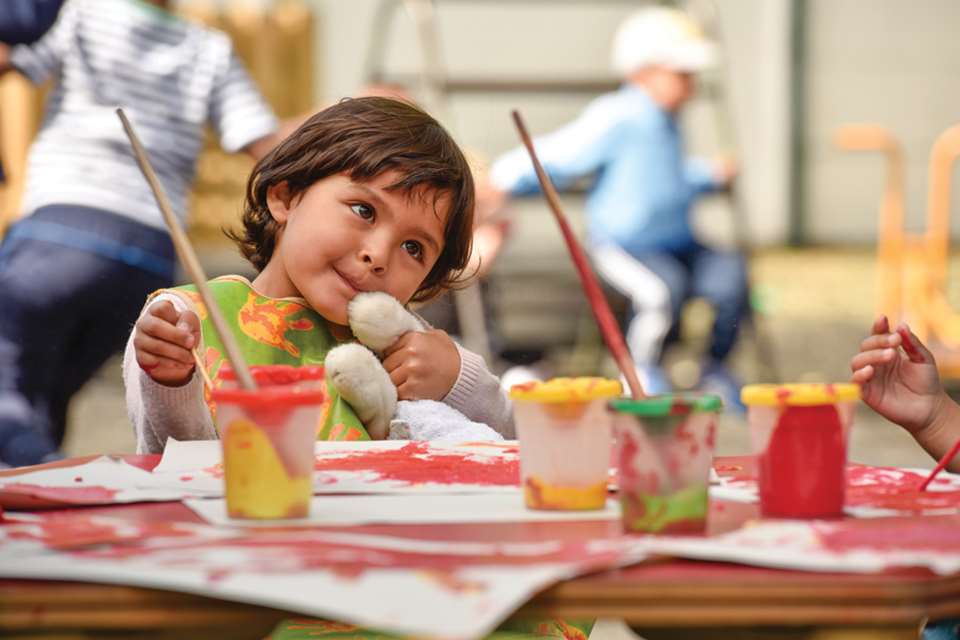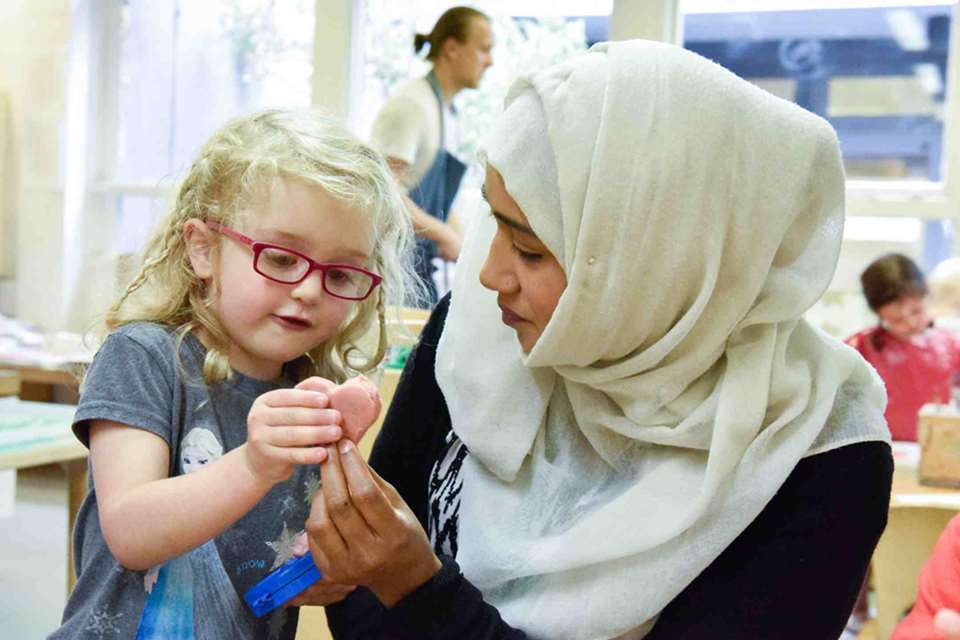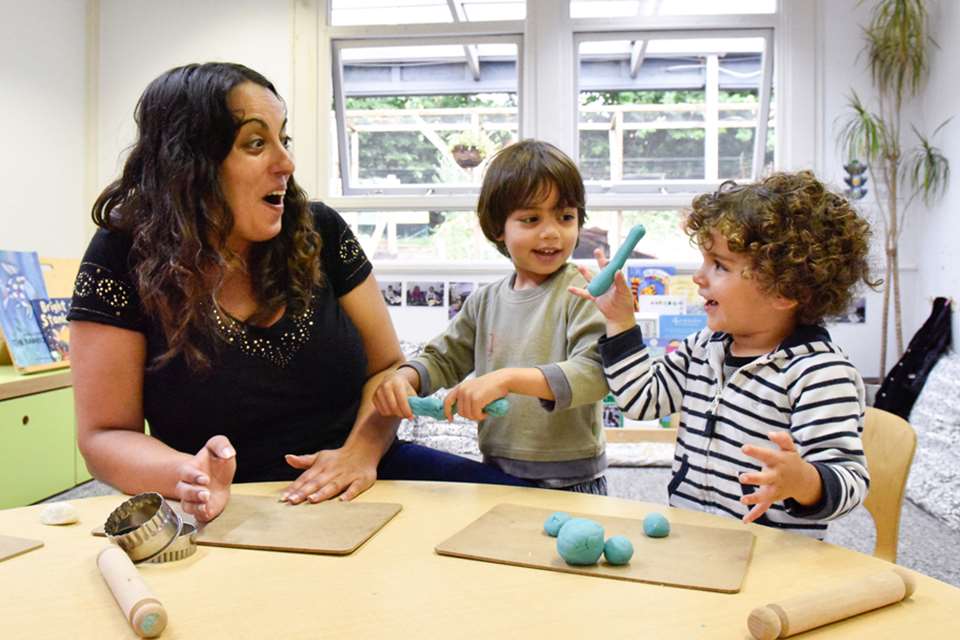Learning & Development: Communication & Language - Confused?
Ludovica Serratrice and Samantha Durrant
Monday, September 21, 2015
What is it like growing up with two languages, and how does it affect development? Ludovica Serratrice and Samantha Durrant address some common misunderstandings and provide the facts.
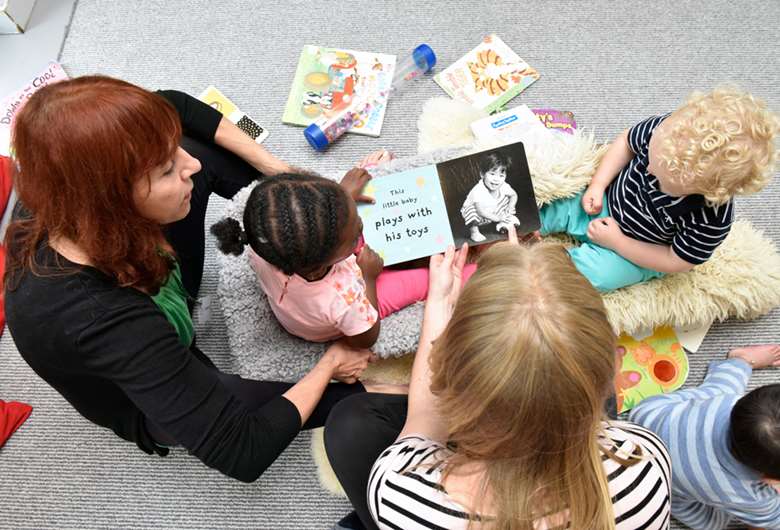
Children's language learning is a rather impressive achievement we often take for granted. Just as naturally as they start to crawl and later walk in their first year of life, most children will attempt their early words around their first birthday.
By the age of 18 months they will begin putting some words together in simple combinations (for example, 'Want juice', 'More bread', 'No water'). Figuring out what words mean, how they are pronounced and how they go together in sentences is, however, no mean feat. Accomplishing this task in two or more languages in early childhood should be even more daunting, and yet millions of children do it every day all over the world.
According to the 2011 Census, in the UK alone an estimated 39 per cent of primary school children speak English as an additional language; some were born here and some are immigrants to this country.
In large British cities, and even in more rural parts of the UK, there are sizeable numbers of bilingual children in nurseries and schools. Despite the fact that bilingualism is an integral part of the life of many families, there is still a number of misconceptions surrounding it.
MYTHS AND FACTS
Myth: Children soak up languages like sponges
The widespread belief is that children can pick up a second language quic- kly and effortlessly, much more so than adults. In essence, children should be able to adjust to a second language and catch up with their monolingual peers very fast.
Fact: There is evidence that being exposed to a second language at a young age affects how well one will end up mastering the language, especially when it comes to sounding like a native speaker 1. At the same time, studies following the language development of immigrant children over a number of years have consistently shown that it takes these second language learners years to achieve the language standards of monolingual children 2. It is, therefore, unreasonable to expect that children who have been exposed to English for only a few months will have language skills comparable to those of children who have only ever heard English all their lives.
No two children are alike; the context of exposure to their languages will vary considerably and will ultimately affect how quickly they will learn their second language. Even children who are exposed to two languages simultaneously are likely to develop differently in each.
Some of this variation will have to do with how often they hear the languages, and whether they have the opportunity to interact with many different native speakers. In general, even children who have a relatively balanced exposure typically know fewer words in each of their langua- ges than monolingual children of the same age.
Nevertheless, the number of concepts for which they have words in either language is comparable to the number of words in the vocabularies of monolingual peers. For example, an Italian-English bilingual child may not know the word for 'milk' in English, but may know the word for this concept in Italian.
The comparison with monolingual children is somewhat unfair as bilingual children are not the sum of two monolinguals; most of their language experience is by its very nature distributed across two languages.
For example, bilingual children may know the words for many types of food in their home language, but they may not know the translation of these words in the language outside the home because they have never been exposed to these foods outside of the home environment. It is, therefore, only natural that the language profile of bilingual children will not be identical to that of monolinguals of the same age.
Some studies indicate that when bilingual children hear a language between 40 per cent and 60 per cent of the time, they understand the same number of words in each language as monolinguals. However, to produce the same number of words as monolinguals, it appears that bilinguals need to be exposed to the language 60 per cent or more of the time 3,4.
Myth: Mixing languages is a sign of confusion
Bilingual children, just like bilingual adults, often mix their languages. For example, they may start saying something in Polish and then switch to English. Or they may be using a completely English sentence and insert a Polish word.
To a naive observer, engaging in language mixing, or code-switching, might seem like a sign of confusion. However, decades of research on both children's and adults' use of two languages in the same sentences or in the same conversation has actually shown that bilingual speakers are anything but confused when they code-switch.
Fact: The reasons that children and adults code-switch are numerous and systematic 5. They may be switching languages because they are addressing a listener who may understand only one of the languages they know - for example their grandmother, who speaks only Punjabi and understands very little English. They may not know, or remember, a word in one of their languages, or a certain idea may be expressed better or more effectively in the other language.
Where a monolingual may simply remain silent or hesitate, a bilingual has another language to turn to in order to fill that vocabulary gap and, if appropriate, they will do so.
Bilingual speakers typically code-switch for principled reasons and do not do so randomly. In fact, code-switched sentences show a lot of sophistication in children's understanding of how words behave in each of their languages.
For example, a Spanish-English child might code-switch a Spanish article ('la') and an English noun ('moon') when she says 'la moon' pointing to the moon. This bilingual child has not chosen the article 'la' at random. In Spanish, unlike in English where we only have 'the', there are two types of definite articles: 'el' for masculine nouns (for example, 'el perro', the dog) and 'la' for feminine nouns (for example, 'la vaca', the cow). The translation of 'moon' in Spanish is 'luna', a feminine word that must be preceded by the article 'la', hence 'la moon'.
As this example shows, code-switching requires a wealth of sophisticated linguistic knowledge on the part of the bilingual child and it is the exact opposite of confusion. Code-switchers are very savvy language users indeed.
Myth: Parents should speak English to their children - maintaining the home language will prevent their children from learning English
English is the official language of the UK and it is the language of schooling; it is only natural that parents - and teachers - should want their children to learn English and to learn it well. This, however, does not mean that parents whose first language is not English should stop speaking their language in favour of English.
Fact: Although we know that input is one of the most important determinants of language development, research has also shown that quantity is not the only factor and that the quality of the input is important.
One such indicator of quality is the nativeness of the input. Studies have shown repeatedly that when non-native speakers use English with their children, the children do not have better English skills than children whose parents use their mother tongue. This is possibly because the parents' skills in their non-native language are not as advanced as those of a native speaker, therefore the quality of the language that they address to their children is not as good as that of a native speaker6.
One of the factors that positively affects bilingual children's English skills is the number of native speakers that they interact with 7. The diversity of the input that children are exposed to in different contexts - for example, in nursery or with a childminder, parents' friends or other older children - is likely to enrich their language experience in positive ways.
Children can learn about food and stories that are traditional in their parents' language and culture from adults in their community. They can learn about children's games from older children who also speak the home language, and they can learn about nursery rhymes and song from English-speaking childminders and teachers.
Maintaining a linguistic and cultural identity and fostering relationships with members of the extended family are important reasons for speaking the home language - for example, when visiting the parents' country of origin, so that they can speak to friends and family.
In addition, home language use can have additional benefits in other areas of learning and development for bilingual children 8, including the transfer of literacy skills from the home language to the language of schooling.
For example, children who already have an understanding of how the sound-letter correspondence works in one language are likely to transfer some of what they know to their other language 9. Home language and English can happily co-exist and feed off each other in a mutually beneficial relationship.
Myth: Bilingual children are 'smarter'
Research reporting cognitive advantages for bilinguals over the lifespan has lately been featured in the press with headlines such as 'Why bilinguals are smarter' and 'Bilingualism delays dementia, say experts'.
Fact: A closer reading of these studies shows that the advantages of bilingualism are quite selective, that they tend to depend on the type of experiment, on the aspects of language and cognition being tested, and that they have not always been replicated10. For example, in experimental situations, bilingual children can be more accurate and/or faster than monolingual children when they need to ignore a distracting stimulus (for example, the colour of an object).
Even when advantages are found in favour of bilinguals, it is important to understand that such advantages are often based on laboratory experiments and typically consist of faster reaction times whose magnitude is in the order of a few hundred milliseconds. The extent to which these subtle cognitive advantages are also found in everyday situations is still poorly understood. For example, we do not yet know whether bilingual children are better at ignoring distracting information outside of a laboratory situation. What is clear though is that there are undeniable advantages to knowing two or more languages.
Aside from potential cognitive advantages, bilingualism opens the door to different cultures. Being able to communicate effectively with speakers of different languages is also likely to lead to societal advantages. Multilingualism and multiculturalism are often accompanied by greater awareness and tolerance of cultural differences, a pre-requisite for peaceful co-existence.
Myth: Bilingual children are more vulnerable to language impairment
It is unfortunately not uncommon to hear the opinion that the origin of language impairment, in the case of a bilingual child, is to be found in the exposure to two languages. All too often parents of bilingual children who may have language and communication difficulties are advised by well-intentioned professionals to drop the minority language.
Fact: There have been no studies to date on the frequency of language impairment in bilingual children. However, it is reasonable to expect that the prevalence of language impairment will be similar to that for monolingual children, approximately 7 per cent of the child population 11.
We do know that being bilingual does not appear to put children at a particular advantage or disadvantage when it comes to language impairment 12, 13. We also know that language impairment affects both languages of a bilingual child, and that developmental language impairment manifests itself early on in the acquisition process. Children with a developmental language impairment will start babbling late and will be slow word learners, although not all slow word learners have a language impairment.
Bilingual children typically have less advanced language skills than monolingual children of the same age. Therefore, diagnosing a primary language impairment in the absence of neurological impairment, hearing loss or another primary condition (such as Down Syndrome) can be very challenging 14.
The advice to parents and teachers who may be concerned about the language development of a bilingual child is to closely observe the child's communication skills, including gestures, paying particular attention to how well they understand language.
Children who have difficulties with producing language, but who have little trouble understanding it, are more likely to resolve their language difficulties over time.
It is also important to evaluate the child's language skills in the context of the amount of language they hear. If a child hears very little English, it is only to be expected that their skills in that language will be minimal. If, however, the child also has very limited skills in the home language despite hearing it a lot, then referral to a speech and language therapist may be warranted.
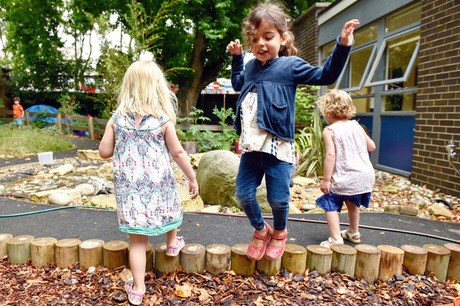
TIPS FOR FOSTERING A POSITIVE ATTITUDE TO BILINGUALISM
Raising children bilingually can feel like a daunting prospect for parents who may receive conflicting information from family, friend and professionals. Here are some tips to consider when working with bilingual children and their parents, though it is important to remember that all families are different, so not all of these suggestions will apply in all cases.
- Encourage parents to meet, and spend time with, other people who speak their language to give the child a range of experiences.
- Remind parents that language exposure is critical and that the child needs to hear a language to understand it and speak it.
- Be patient. The child has to identify which language they are hearing and then choose the right words for that language - this is a tricky thing to do, so it might take them a little longer than children learning only one language.
- Remind yourself and the child's parents of the benefits of knowing more than one language. This opens the door to other cultures in a different way to a single language speaker.
- Encourage the parents to be flexible in their approach. Different people always have different opinions on the 'right' way to do things but ultimately they have to do what they think is best, depending on their situation.
ONE-PARENT/ONE-LANGUAGE APPROACH TO LEARNING
One of the most frequently recommended methods for raising a bilingual child is the one-parent/one-language approach. Using this method, each parent consistently speaks one language to the child, providing the child with a clear way to distinguish the two languages they are hearing 15.
However, it has recently been shown that switching between languages, even within a sentence, is not detrimental to children's vocabulary development 16. So, although one parent/one language may be held up as the ideal situation for bilingual children, they seem to cope well with mixed exposure.
Benefits
- Parents speak their native language with the child, which is most natural to them.
- Children are consistently exposed to both languages.
- Children have opportunities to speak each language themselves.
Challenges
- The child may not get enough input in the minority language to learn it well.
- Parents need to decide how to communicate with each other. This can be a tough decision, because it can both reduce exposure to the other language and implicitly undermine its importance.
- This approach can sometimes lead to the exclusion of one parent. If they don't speak the other language, they will not be able to follow the conversation.
Ludovica Serratrice, University of Manchester, is reader in clinical linguistics and co-investigator at the ESRC International Centre for Language and Communicative Development (LuCiD). Samantha Durrant, University of Liverpool, is a post-doctoral research associate at LuCiD
REFERENCES
- DeKeyser, RM (2013). Age effects in second language learning: Stepping stones toward better understanding. Language Learning, 63(1), 52-67.
- Paradis, J, & Kirova, A (2014). English second-language learners in preschool Profile effects in their English abilities and the role of home language environment. International Journal of Behavioral Development, 38(4), 342-349.
- Thordardottir, E (2011). The relationship between bilingual exposure and vocabulary development. International Journal of Bilingualism, 15(4), 426-445.
- Cattani, A, Abbot-Smith, K, Farag, R, Krott, A, Arreckx, F, Dennis, I, & Floccia, C (2014) How much exposure to English is necessary for a bilingual toddler to perform like a monolingual peer in language tests? International Journal of Language & Communication Disorders, 49(6), 649-671
- Ribot, KM, & Hoff, E (2014). ‘¿ Cómo estas?’’I’m good.’ Conversational code-switching is related to profiles of expressive and receptive proficiency in Spanish-English bilingual toddlers. International Journal of Behavioral Development, 38(4), 333-341.
- Paradis, J (2011). Individual differences in child English second language acquisition: Comparing child-internal and child-external factors. Linguistic Approaches to Bilingualism, 1(3), 213-237.
- Gollan, TH, Starr, J, & Ferreira, VS (2015). More than use it or lose it: The number-of-speakers effect on heritage language proficiency. Psychonomic Bulletin & Review, 22(1), 147-155.
- Winsler, A, Burchinal, MR, Tien, HC, Peisner-Feinberg, E, Espinosa, L, Castro, DC, & De Feyter, J (2014). Early development among dual language learners: The roles of language use at home, maternal immigration, country of origin, and socio-demographic variables. Early Childhood Research Quarterly, 29(4), 750-764.
- Oller, DK, & Eilers, R (eds), (2002). Language and literacy in bilingual children. Clevedon, England: Multilingual Matters.
- Valian, V (2015). Bilingualism and cognition. Bilingualism: Language and Cognition, 18(01), 3-24.
- Tomblin, JB, Records, NL, Buckwalter, P, Zhang, X, Smith, E, & O'Brien, M (1997). Prevalence of specific language impairment in kindergarten children. Journal of Speech, Language, and Hearing Research, 40(6), 1245-1260.
- Paradis, J, Crago, M, Genesee, F, & Rice, M (2003). French-English Bilingual Children With SLIHow Do They Compare With Their Monolingual Peers? Journal of Speech, Language, and Hearing Research, 46(1), 113-127.
- Windsor, J, Kohnert, K, Lobitz, KF, & Pham, GT (2010). Cross-language nonword repetition by bilingual and monolingual children. American Journal of Speech-Language Pathology, 19(4), 298-310.
- Kohnert, K (2010). Bilingual children with primary language impairment: Issues, evidence and implications for clinical actions. Journal of Communication Disorders, 43(6), 456-473.
- Saunders, G (1988). Bilingual Children: From Birth to Teens. Multilingual Matters Inc, 242 Cherry St, Philadelphia, PA 19106-1906 (paperback: ISBN-1-85359-009-6; hardback; ISBN-1-85359-010-X).
- Bail, A, Morini, G, & Newman, R. Look at the gato! Code-switching in speech to toddlers. Journal of Child Language, Available on CJO 2014 doi:10.1017/S0305000914000695


